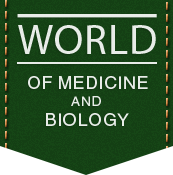Article
METHYLETHYLPYRIDINOL SUCCINATE AS POTENTIAL ADJUVANT OF ANTIMICROBIAL DRUGS
| About the author: | Vazhnycha E.M., Loban G.A., Bobrova N.A, Gancho O.V. |
| Heading | EXPERIMENTAL MEDICINE |
| Type of article | Scentific article |
| Annotation | The issue of effective inhibition of microbial growth is relevant for modern medicine, both in view of the emergence of resistant microorganisms, and as a result of the appearance of significant number of patients with suppressed immunity in which commensal microbes become pathogens. From the point of view of the search for "non-traditional" antimicrobial therapy, methylethylpyridinol succinate (mexidol), known as antioxidant with neurotropic properties which also improves the treatment of purulent wounds, peritonitis, and pancreatitis, is noteworthy. Research aim is to study the antimicrobial activity of methylethylpyridinol succinate and its combinations with antibiotics on the reference strains of microorganisms E. coli ATCC 25922 and S. aureus ATCC 25923. The investigation of antimicrobial activity of methylethylpyridinol succinate was carried out by disk-diffusion method applying of the solution of preparation on the sterile paper disks upto 1000 μg/disk. Determination of the minimal inhibitory concentration (MIC) and minimal bactericidal concentration (MBC) of methylethylpyridinol succinate was performed by to the standard serial broth dilutions method using the main solution of the preparation at concentration of 20000 μg/ml. Determining the combined effect of known antimicrobials and methylethylpyridinol succinate on reference strains of the microorganisms by disc-diffusion method, we take standard paper disks with antibiotics with additionally applied solution of methylethylpyridinol succinate (1000 μg/disc). Zones of bacterial growth inhibition were measured and compared with those around standard disks without this drug. It is shown that around the disks with methylethylpyridinol succinate zones of inhibition of microorganisms’ growth are formed with average diameter of 23.4 mm for S. aureus ATCC 25923 and 26.4 mm for E. coli ATCC 25922. Methylethylpyridinol succinate MIC is 1250 μg/ml for both test-cultures. MBC is 5000 μg/ml in the E. coli culture and 2500 μg/ml in the culture of S. aureus. Growth inhibition zones of E. coli ATCC 25922 around disks with antibiotics range from 16.0 mm to 26.6 mm. The combinations of these agents and methylethylpyridinol succinate are characterized by an increase in the growth inhibition zones of intestinal rod as compared to the antibiotics themselves. They are statistically significant for the combinations of ceftazidime or doxacycline. The growth inhibition zones of S. aureus ATCC 25923 around disks with antibiotics are 17-27.2 mm. Combined action of these agents and methylethylpyridinol succinate in relation to the test-culture of staphylococcus is accompanied by an increase of the zones of bacterial growth inhibition in comparison with similar areas around standard disks. Such phenomenon is occurred when combining the investigated drug with vancomycin, ceftazidime, fusidine, and norfloxacin. Thus, the combination of methylethylpyridinol succinate with antibiotics of various groups including cell wall synthesis inhibitors, protein synthesis inhibitors, and DNA gyrase inhibitors enhances their antimicrobial activity against reference strains of microorganisms. The ability of the studied drug to suppress the development of both gram-positive cocci and gram-negative rods may reflect a wide spectrum of its action. Detected susceptibility of reference strains of E. coli and S. aureus to methylethylpyridinol succinate is not high, therefore it should be assumed that the drug's ability to enhance the antibiotic effect which may be due to the membranotropic mechanism and the influence on prooxidant-antioxidant equilibrium in the bacterial cell, is more important to the practice than its own antimicrobial effect. |
| Tags | methylethylpyridinol succinate, mexidol, antimicrobial action, reference strains of microorganisms |
| Bibliography |
|
| Publication of the article | «World of Medicine and Biology» №2(64), 2018 year, 123-126 pages, index UDK 615.27+615.371+615.33 |
| DOI | 10.26724/2079-8334-2018-2-64-123-126 |
